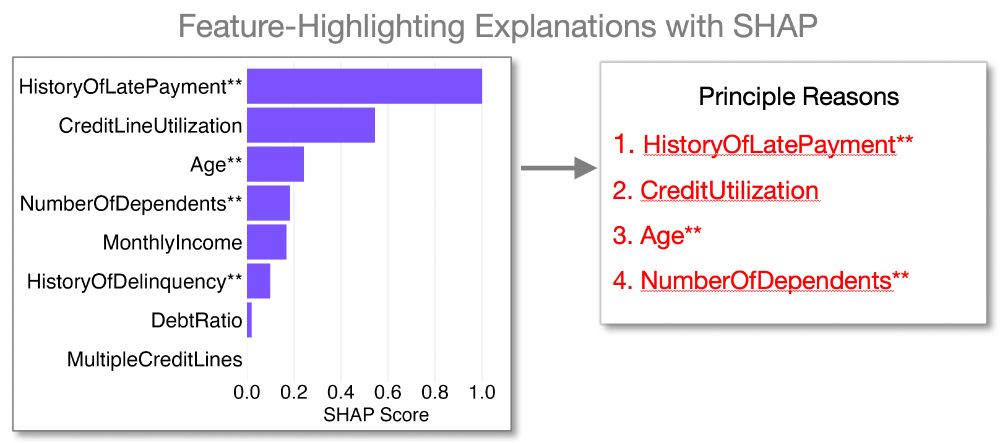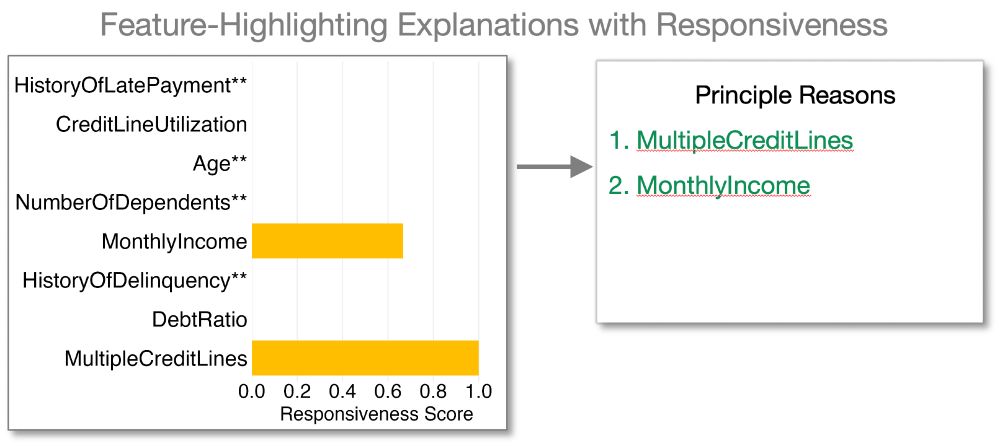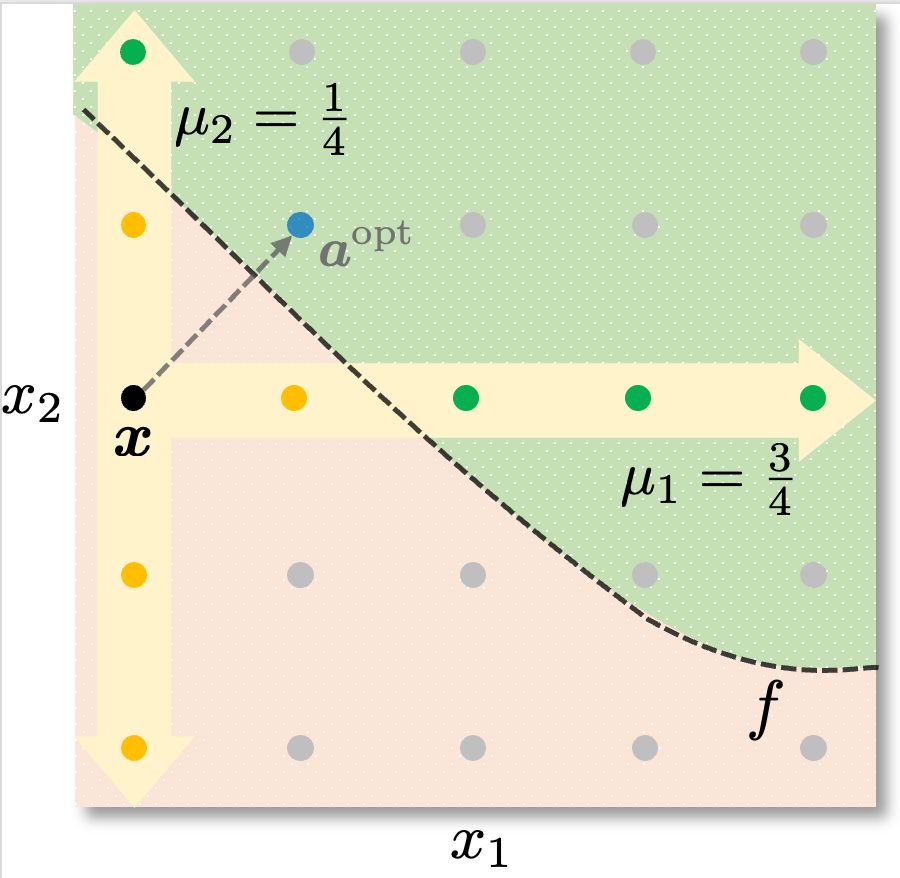harry.scheon.com
Poster: Sat 26 Apr 10AM — 12:30PM SGT
Paper: tinyurl.com/2deek4wx
Code: tinyurl.com/2rb6zc28
Poster: Sat 26 Apr 10AM — 12:30PM SGT
Paper: tinyurl.com/2deek4wx
Code: tinyurl.com/2rb6zc28
1. Can be swapped in place of existing methods
2. Highlight responsive features
3. Flag instances where such features don't exist!
1. Can be swapped in place of existing methods
2. Highlight responsive features
3. Flag instances where such features don't exist!
1. features are not responsive
2. features are not monotonically responsive (e.g., can't increase income "too much")
3. features must change in counterintuitive ways (e.g., decrease income) to obtain the desired prediction

1. features are not responsive
2. features are not monotonically responsive (e.g., can't increase income "too much")
3. features must change in counterintuitive ways (e.g., decrease income) to obtain the desired prediction
1. Immutable: HistoryOfLatePayment
2. Mutable but not actionable: Age, NumberOfDependents
3. Actionable but not responsive: CreditUtilization

1. Immutable: HistoryOfLatePayment
2. Mutable but not actionable: Age, NumberOfDependents
3. Actionable but not responsive: CreditUtilization


- Many provide companies with substantial flexibility
- Standard approach is to use methods like SHAP and LIME to highlight important features
- Many provide companies with substantial flexibility
- Standard approach is to use methods like SHAP and LIME to highlight important features

